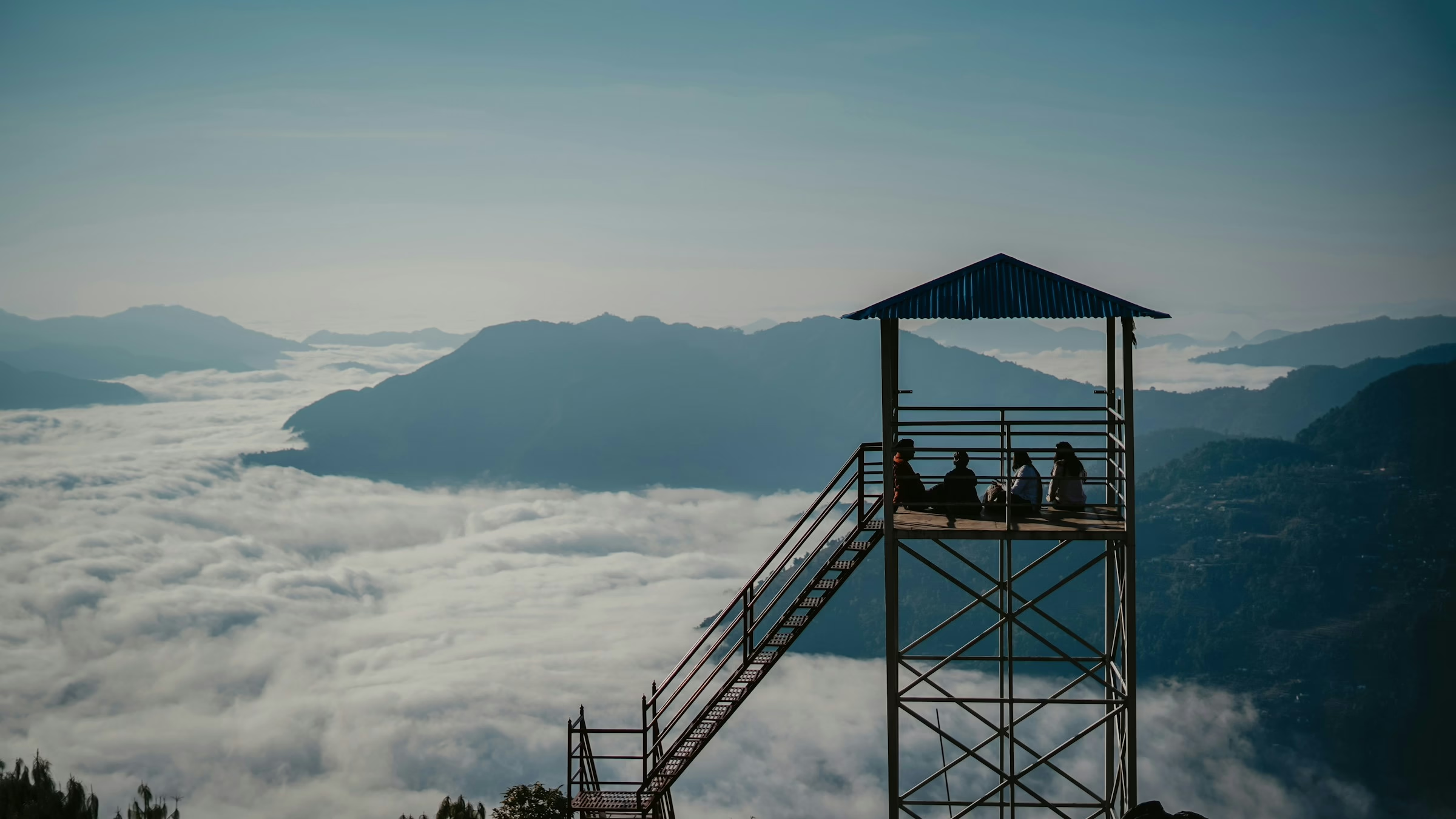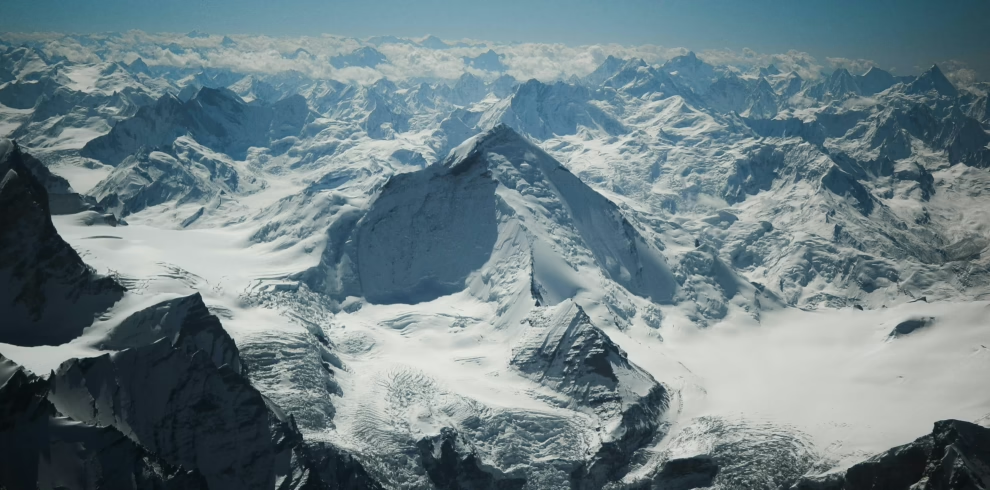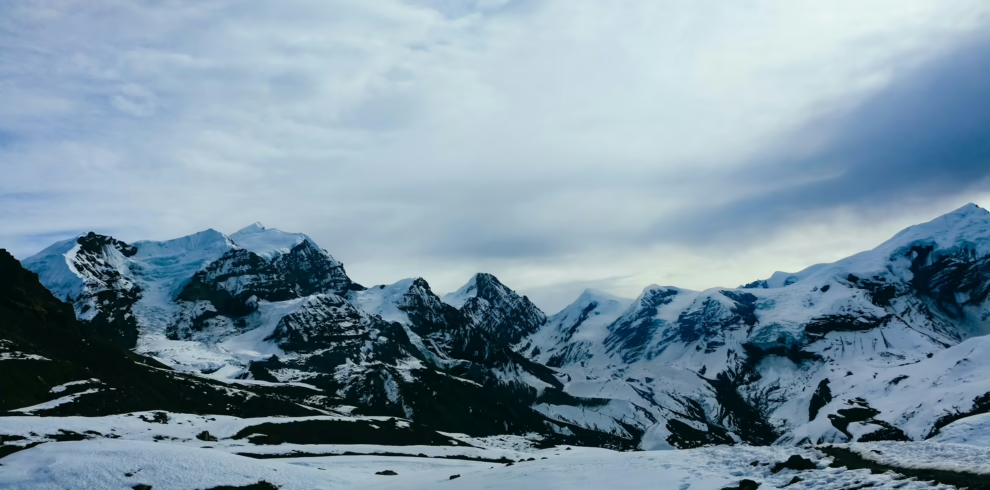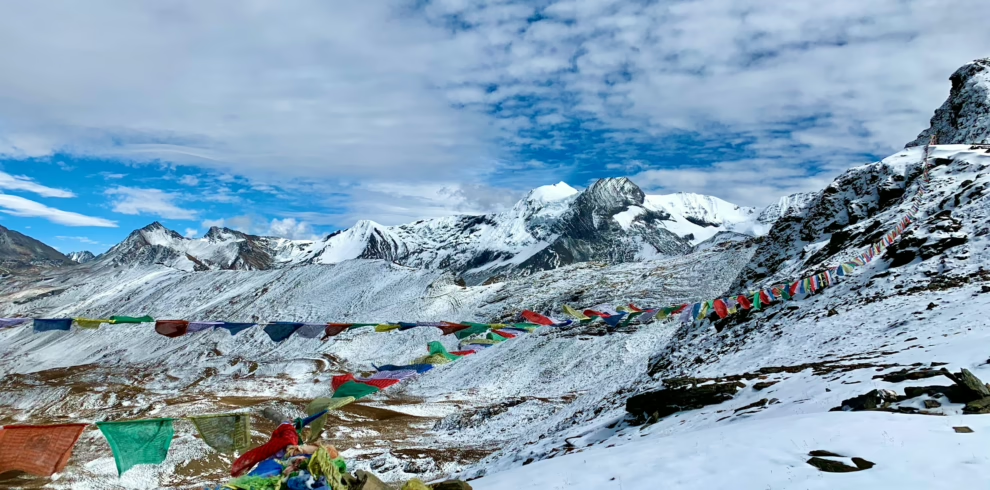For stunning views of the Himalayas, the Dhampus Sarangkot Trek offers a rewarding morning climb. The Australian Camp, just 30 minutes from Dhampus, is a popular stop, especially in the morning. The best seasons for this trek are spring (March to May) and autumn (September to November), though it’s open year-round. Spring brings vibrant rhododendrons, while autumn often has clearer skies. The rainy season is quieter, with fewer tourists, and each season has its own charm.
Starting with a short drive from Pokhara to Phedi, the 3-day trek begins with a climb through rhododendron forests and terraced fields to reach Dhampus. This village is home to the Gurung, Brahmin, and Magar people. Enjoy lunch with panoramic views of Annapurna, Lamjung Himal, and other snow-capped peaks.
The trek continues towards Sarangkot, a prime viewpoint, passing rice terraces and hills. The walk lasts about three to four hours, offering breathtaking sunrise and sunset views of the Himalayas. Sarangkot is also known for paragliding, and if included in the itinerary, trekkers can soar above Fewa Lake. Otherwise, the trek ends in Pokhara, where you can explore more activities.
At Green Lotus Trekking Pvt. Ltd, we offer a carefully crafted itinerary for the Dhampus Sarangkot Trek, ensuring an unforgettable experience. Bookings are now open for 2025 and 2026. We can tailor the trek to fit your time, budget, and fitness level. For more details or questions about the trek’s cost, feel free to contact us.
Benefits of Booking the Dhampus Sarangkot Trek with Us
- Airport pickup and drop-off (International and Domestic)
- Free Dhampus Sarangkot Trek map
- Oximeter to monitor blood oxygen levels
- Medical kit for emergencies
- Free excess luggage storage at Green Lotus Trekking store during the trek
What to Expect from the Dhampus Sarangkot Trek?
The Dhampus Sarangkot Trek offers a memorable blend of natural beauty, cultural diversity, and adventure. Here’s what you can expect:
- Breathtaking views: Enjoy panoramic vistas of the Annapurna and Dhaulagiri mountain ranges. The sunrise and sunset views from Sarangkot are particularly stunning.
- Cultural encounters: Visit traditional Nepalese villages like Dhampus, Pothana, and Landruk. Interact with the locals and immerse yourself in their way of life.
- Scenic landscapes: Trek through lush forests of rhododendron, oak, and bamboo, home to various bird species.
- Easy trek: Suitable for all age groups, the trek is relatively easy, requiring no prior trekking experience.
- Diverse terrain: Experience rolling hills, terraced farms, and dramatic gorges.
- Adventure activities: Options for paragliding, bungee jumping, and zip-lining along the way.
- Comfortable lodging: Stay in teahouses and lodges, enjoying traditional Nepalese food and other cuisines.
Is the Dhampus Sarangkot Trek Suitable for You?
The trek is suitable for anyone with a reasonable level of fitness and a sense of adventure. Here’s what to consider:
- Fitness level: The trek involves 4 to 6 hours of walking daily, so a moderate fitness level is important. If you have a sedentary lifestyle or health concerns, consult your doctor first.
- Altitude: With a maximum altitude of 1600 meters, altitude sickness is rarely a concern. However, be aware of symptoms and take precautions.
- Best seasons: The ideal time is during spring (March to May) and autumn (September to November). The monsoon (June to August) brings slippery trails, while winter (December to February) can be cold and snowy.
- Trekking experience: No prior trekking experience is required, but basic trekking skills will enhance your experience.
- Cultural respect: Be mindful of the local customs in the villages you visit. Respecting the culture will enrich your trek.
Preparation for the Dhampus Sarangkot Trek
Proper preparation ensures a safe and enjoyable trek. Here’s what to consider:
- Physical fitness: Prepare by doing regular cardiovascular exercises, strength training, and flexibility routines. The trek involves 5-6 hours of walking per day on hilly terrain.
- Essential gear: Bring sturdy hiking shoes, warm clothing, rain gear, a hat, sunglasses, a backpack, and a sleeping bag. Don’t forget a first-aid kit, water bottle, and headlamp.
- Altitude precautions: While the highest point is only 1600 meters, stay hydrated, avoid alcohol and smoking, and ascend slowly.
- Weather readiness: The weather can change rapidly in the mountains, so check the forecast and pack accordingly.
- Cultural awareness: Be respectful of local customs in Nepalese villages. Understanding and respecting their traditions will make your experience even more rewarding.
Useful Information for the Dhampus Sarangkot Trek
Best Time for the Dhampus Sarangkot Trek
The best times for the trek are during the spring (March to May) and autumn (September to November) seasons. These months offer clear skies, dry and stable weather, and moderate temperatures for comfortable trekking.
- Spring: The hills are covered with wildflowers, and rhododendron forests are in bloom, creating a picturesque experience.
- Autumn: The weather is stable with clear skies, perfect for panoramic views of the Annapurna and Dhaulagiri ranges. It’s also a great time to explore local villages and experience cultural festivals.
- Avoid the monsoon season (June to August) due to heavy rainfall, slippery trails, and obscured views. Winter (December to February) can be cold and snowy, making some areas difficult to trek.
Food Availability on the Dhampus Sarangkot Trek
While the trek isn’t at high altitudes, you’ll find a variety of food options. Green Valley Nepal Treks provides three meals daily—breakfast, lunch, and dinner—with seasonal fruits after dinner. The trek offers Nepalese, Italian, Chinese, Western, Continental, and Japanese dishes. In Sarangkot and Pokhara, you’ll find a wider selection of food, while in Dhampus, options may be more limited. Breakfast and dinner are served at the same teahouse where you stay, while lunch is provided on the trail.
Accommodation on the Dhampus Sarangkot Trek
Though it’s a teahouse trek, Sarangkot offers urban-like amenities. Private rooms with attached bathrooms are available for those who prefer more comfort. In Dhampus, shared rooms with basic amenities are provided, including a pillow, blanket, and a modest bedroom. You may need to share an outside bathroom. Electricity is generally available, allowing you to charge devices for free.
Difficulty Level of the Dhampus Sarangkot Trek
The Dhampus Sarangkot Trek is an easy trek, with well-defined trails, though some steep ascents and descents may challenge beginners.
- The trek starts in Phedi and passes through traditional villages like Dhampus and Naudanda.
- The highest point is the Sarangkot viewpoint at 1,592 meters, reached on the third day.
- It takes 3 to 4 days, covering 25 to 30 kilometers, with daily walking hours of 4 to 6 hours.
- The trek is manageable for those with moderate fitness, though beginners should prepare physically. It’s also important to acclimatize and take regular breaks to avoid altitude sickness.
Travel Insurance for the Dhampus Sarangkot Trek
Though not legally required, travel insurance is strongly recommended. It should cover medical emergencies, accidents, theft, and trip cancellations. The trek takes you to remote areas where medical emergencies could arise, and insurance will help cover medical costs or evacuation. Ensure the policy covers trekking up to 2,000 meters, as some policies exclude high-altitude coverage.
Altitude Sickness and Remedies
Altitude sickness is unlikely due to the trek’s low altitude, but it’s still important to acclimatize, hydrate, and avoid alcohol and caffeine. If symptoms arise, stop ascending and rest. Over-the-counter medications like acetaminophen or ibuprofen may help. In severe cases, descend to a lower altitude. Natural remedies like coca tea, ginger tea, and garlic soup may also alleviate symptoms.
Packing List for the Dhampus Sarangkot Trek
Essential items include:
- Hiking boots with ankle support
- Comfortable pants and moisture-wicking tops
- Warm layers for cold nights
- Waterproof and windproof jacket
- Hat, gloves, and sunglasses
- Sunscreen and lip balm
- Water bottles or hydration pack
- Snacks (energy bars, nuts, dried fruits)
- First-aid kit (bandages, antiseptic, pain relievers)
- Headlamp with extra batteries
- Travel insurance and passport copies
Pack light and bring only essentials to reduce backpack weight. A duffel bag with a rain cover is recommended.
Guide and Safety for the Dhampus Sarangkot Trek
Hiring a guide can enhance your experience and ensure safety. A guide can provide insights into local culture and history, help navigate the trail, and offer safety tips.
- Guides are familiar with the region’s culture, geography, and potential hazards.
- They ensure you stay on the right path and avoid risks like altitude sickness and extreme weather.
- A guide can also act as a bridge to the local community, facilitating communication with locals.
When choosing a guide, ensure they are experienced, knowledgeable, and licensed. It’s advisable to hire a guide from a reputable trekking company.
Booking the Dhampus Sarangkot Trek
Book with Green Lotus Trekking, a government-approved trekking company, offering competitive prices. We are affiliated with major tourist organizations like the Nepal Tourism Board and TAAN.
To book, simply pay a 10% deposit now, with the remaining balance due on arrival. Join us for an unforgettable trekking experience.





